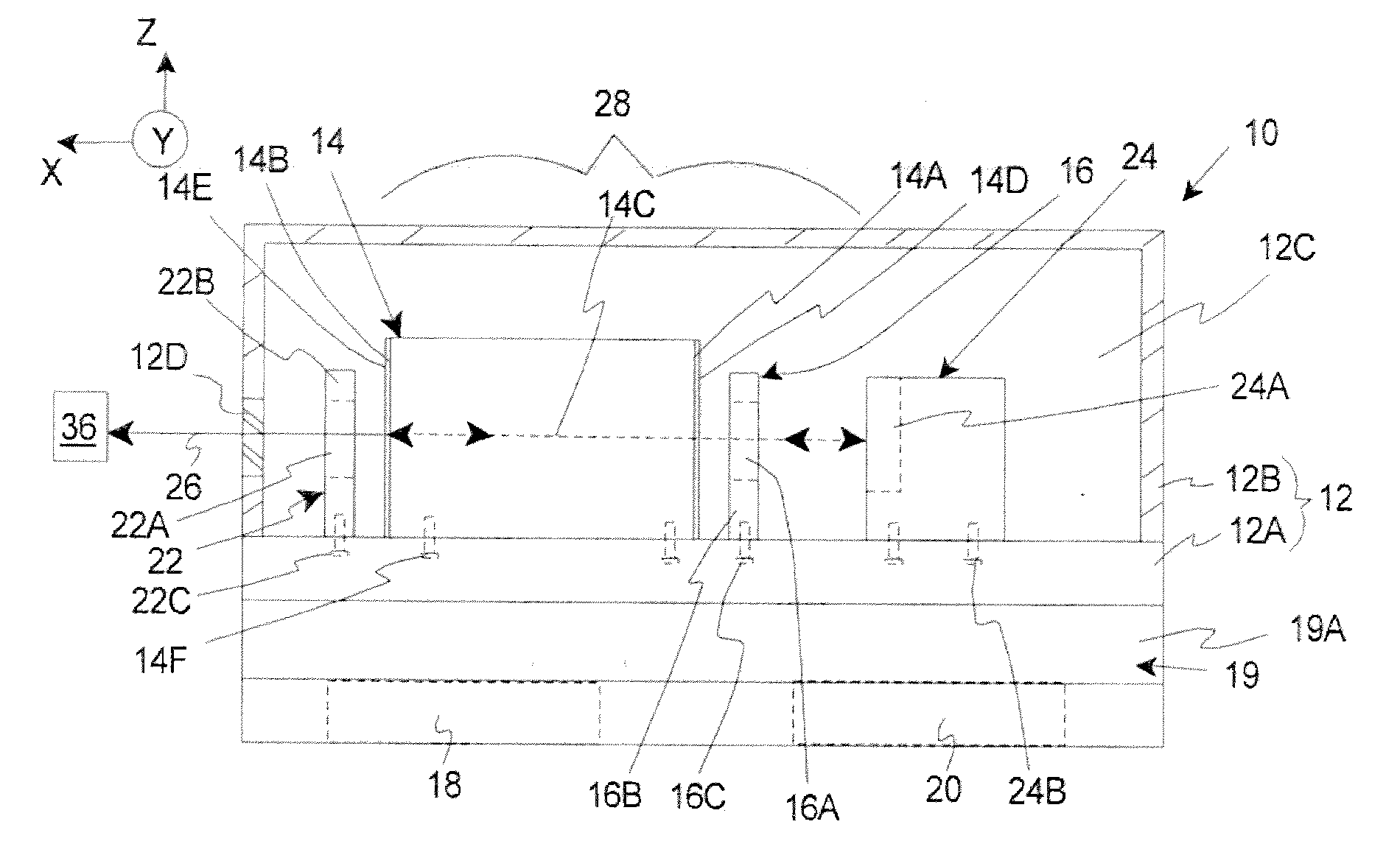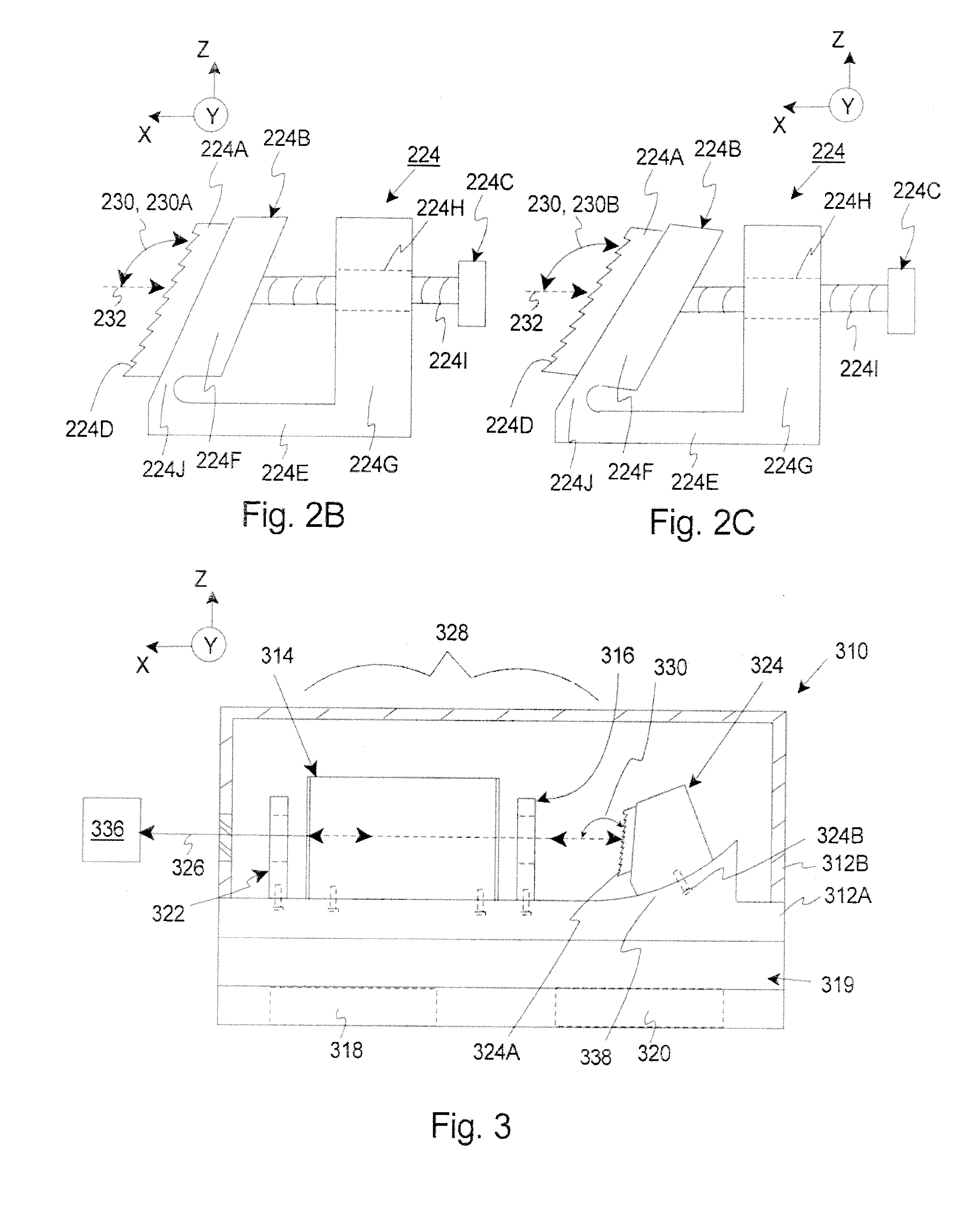Fixed wavelength mid infrared laser source with an external cavity
a laser source and infrared technology, applied in semiconductor lasers, instruments, optical elements, etc., can solve the problems of low yield of process, inefficient and expensive process, etc., and achieve high production yield, large lasing wavelength adjustment, and very precise manufacturing process.
- Summary
- Abstract
- Description
- Claims
- Application Information
AI Technical Summary
Benefits of technology
Problems solved by technology
Method used
Image
Examples
Embodiment Construction
[0024]FIG. 1 illustrates a MIR laser source 10 according to an embodiment of the present invention that includes a source frame 12, a quantum cascade (“QC”) gain media 14, a cavity optical assembly 16, a power source 18 (illustrated in phantom), a temperature controller 19, a laser electronic controller 20 (illustrated in phantom), an output optical assembly 22, and a wavelength dependant (“WD”) feedback assembly 24 that cooperate to generate a fixed, output beam 26 that is in the MIR range. The design of each of these components can be varied pursuant to the teachings provided herein. In should be noted that the MIR laser source 10 can be designed with more or fewer components than described above.
[0025]As an overview, in certain embodiments, the WD feedback assembly 24 includes a wavelength dependent (“WD”) reflector 24A (illustrated in phantom) that cooperates with the QC gain media 14 to form an external cavity 28. Further, the WD reflector 24A can be tuned to adjust the lasing ...
PUM
 Login to View More
Login to View More Abstract
Description
Claims
Application Information
 Login to View More
Login to View More - R&D
- Intellectual Property
- Life Sciences
- Materials
- Tech Scout
- Unparalleled Data Quality
- Higher Quality Content
- 60% Fewer Hallucinations
Browse by: Latest US Patents, China's latest patents, Technical Efficacy Thesaurus, Application Domain, Technology Topic, Popular Technical Reports.
© 2025 PatSnap. All rights reserved.Legal|Privacy policy|Modern Slavery Act Transparency Statement|Sitemap|About US| Contact US: help@patsnap.com



